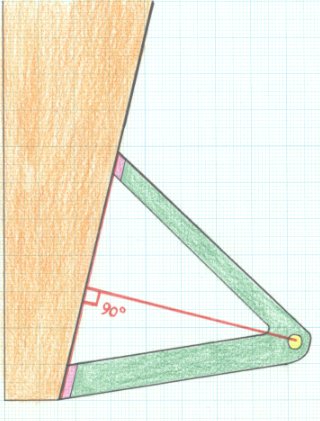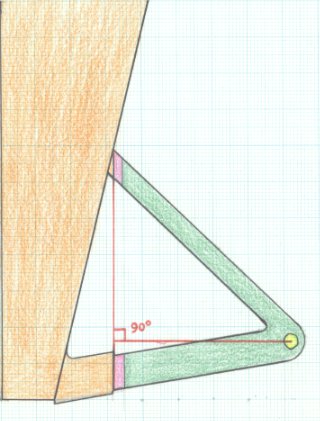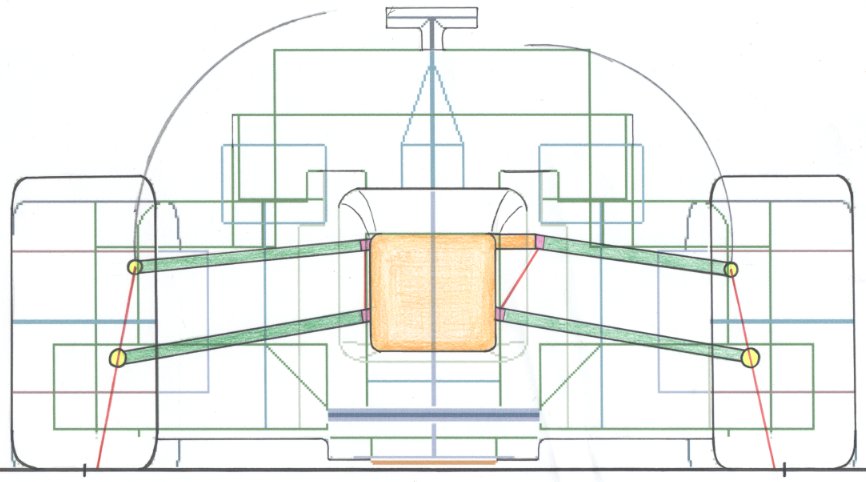

Red Bull RB14 (text & illustration by tw) February 19, 2018
Red Bull 's 2018 machine, [RB 14], which received Aston Martin as the title sponsor, was announced on February 19, 2018.
It was released to the car body in the state of special coloring which is not for actual battle.
The power unit is Renault as before and its name is TAG Heuer.
For photographs of RB 14, see F1-Gate.com.
I will write my opinion from the overview of the car body below.
This year the nose tip has become an air intake.
If it is only to cool the driver it is too large an opening amount.
Does Red Bull find loopholes for some rules?
Front wing The cascade at both ends is three flaps.
Is the nose hole invisible on the top of the nose hidden in the panel for presentation?
The car body side attachment part of the upper and lower wishbone of the front suspension is considered to be a leaf spring type.
The front arm of the upper arm and the mounting part of the car body seems to be made so that the front upper arm moves up and down by extending a strong arm from the monocoque to the left and right about 60 mm.
Illustration below. Orange is a monocoque (survival cell), Wishbone is a green, Pink is leaf spring, Yellow is a pillow ball on the upright side.
 |  |
When monocoque (survival cell) is built according to regulation of FIA, the width becomes narrower as going ahead and becomes wider as going backward.
So, if you connect the wishbone to the monocoque as it is, as you stroke upwards, the upright pivot position retreats.
If you do not want to retract the upright pivot position according to the stroke, solve the problem by extending the front arm from the monocoque to the short arm.
The cross section of the arm is thick like other vehicles because it contains the wheel tether.
The upper arm tilts backward when viewed from the side, but this is due to the reason of the geometry of the anti-dive.
This year the pull rod of the rear suspension is extended to the front and connected with the locker of the car body.
Therefore, the rear anti-roll bar should be inside the gearbox.
The driver continues to be a pair of Daniel Ricardo and Max Verstappen.
This page will update again as soon as the clear shape of the car body is known.
I got a picture of the monocoque side connection of the rear arm of the RB 14.
As well as the front upper arm, it was confirmed that the short and strong arm was extending from the monocoque.
And it turned out that the strong arm did not stretch to the Lower arm.
In other words, a strong arm means that it was not meant to prevent the retracting of the upright pivot due to the stroke.
It becomes like this when it is front view. (Imagination of a conventional car on the left figure, RB14 on the right)

Aerodynamically, the lower arm of the front will be a major harm, so I want to raise it up to improve ventilation.
This contributes to the most important aerodynamic performance of the bottom surface of the car body.
In the conventional car, the radius of rotation of the upper arm is large, whereas the RB 14 shortens the upper arm to reduce the radius of gyration. (See traces of the compass in the figure.)
As a result, there is a high possibility that the RB 14 is a machine with a large change in camber during stroke.
Red Bull engineers may have designed this kind of design in order to make the front camber change even larger when cornering.
Because I think that even with such a short and strong arm, the front and lower arm can not be designed so high. (Actually, RB 14 is the height of the lower arm as shown.)
The disadvantage of this Red Bull method is that the front roll center gets higher because it strengthens the angle at which the upper arm descends downward.
However, it seems that there is gain of mechanical grip when asking for optimization of camber change to ignore it.
In the above figure, the fact that the kingpin is inside the installation center position of the front tread is based on the premise that the wheel has a camber angle.
In that case, the center installation surface of the tire is to move inward.